This birding itinerary in this timeless land, steeped in tradition, folklore, and profound Buddhist values starts from Paro and again ends in Paro. It is a total of 19 nights and covers Western, Central and Eastern Bhutan which includes; Paro, Haa, Thimphu, Punakha/ Wangdue, Gangtey/ Phobjikha, Trongsa, Tingtibi and Panbang in Zhemgang, Bumthang, Mongar, Trashiyangtse and Trashigang. The itinerary takes you through protected areas and the biological corridors. As you uncover the wonders of nature and culture, you’ll discover vast Himalayan forests, breathtaking snow-capped peaks, and remarkable, accessible wildlife. Experience the soul of Bhutan through visits to its serene monasteries and temples, where tradition comes alive. This journey offers unparalleled birding opportunities in the Himalayas, with the chance to spot over 250 species. Highlights include the Satyr Tragopan, Ward’s Trogon, Rufous-necked Hornbill, Himalayan Monal, Ibisbill, Wallcreeper, and Beautiful Nuthatch, alongside sightings of fascinating mammals and dazzling flora. Set off on an extraordinary birding adventure in Bhutan, where rich traditions meet the marvels of nature, promising memories and experiences that will last a lifetime.
Details about the package
What's included
- All meals (Breakfast, lunch and dinner)
Breakfast and Dinner in the hotel or camp. Lunches may be provided in other tourist Restaurants or picnic lunches in certain cases (While on tour). In some cases we will have to have packed breakfast if we are going early and there are no provisions to come back to hotel/ camp. - Accommodations;
While on Tour accommodation shall be provided in a minimum 3 star hotel. Basic Tented accommodation, village houses, ecolodges, basic hotels shall be provided in those places where 3 star hotels are not available.
- Trained and Certified Bird Watching Guide (English Speaking) throughout the tour shall be provided. Assistant guides shall be provided incase of larger groups.
Language Guides may be available at an additional cost, however this shall entirely depend upon the requirements confirmed at the time of booking - Exclusive vehicle for all transfers as per the group size
- Park and conservations fees, Entrance fees for museums and monuments
- Sustainable development fund
Indian Nationals – INR 1200 per person per night
Others – USD 100 per person per night - USD 40 Visa Fee (for travelers other than Indian Nationals)
- Other govt taxes applicable
- Sleeping tents, sleeping mats & pillows.
- Dinning tents, kitchen tent & toilet tent.
- Tables, chairs, utensils, hot water bags.
Please note you will have to bring your own sleeping bags (if your itinerary includes camping, or otherwise will have to hired separately)
- Chef and Assistants.
- Vehicle to Carry the camping equipment and crew (Wherever required).
- In places where there are provisions to have meals in local restaurants, meals shall be provided from restaurants.
- Cost related to planning and confirming your trip to Bhutan excluding the cost not within our premises. Additional Cost may be applicable in certain cases.
Complimentary
- Assistance with Bhutan Travel Info
- Guidance in planning your Bhutan tour
- Drinking water during the tour
- A traditional cultural show
- Hot stone bath in a village house
- National dress and Archery experience
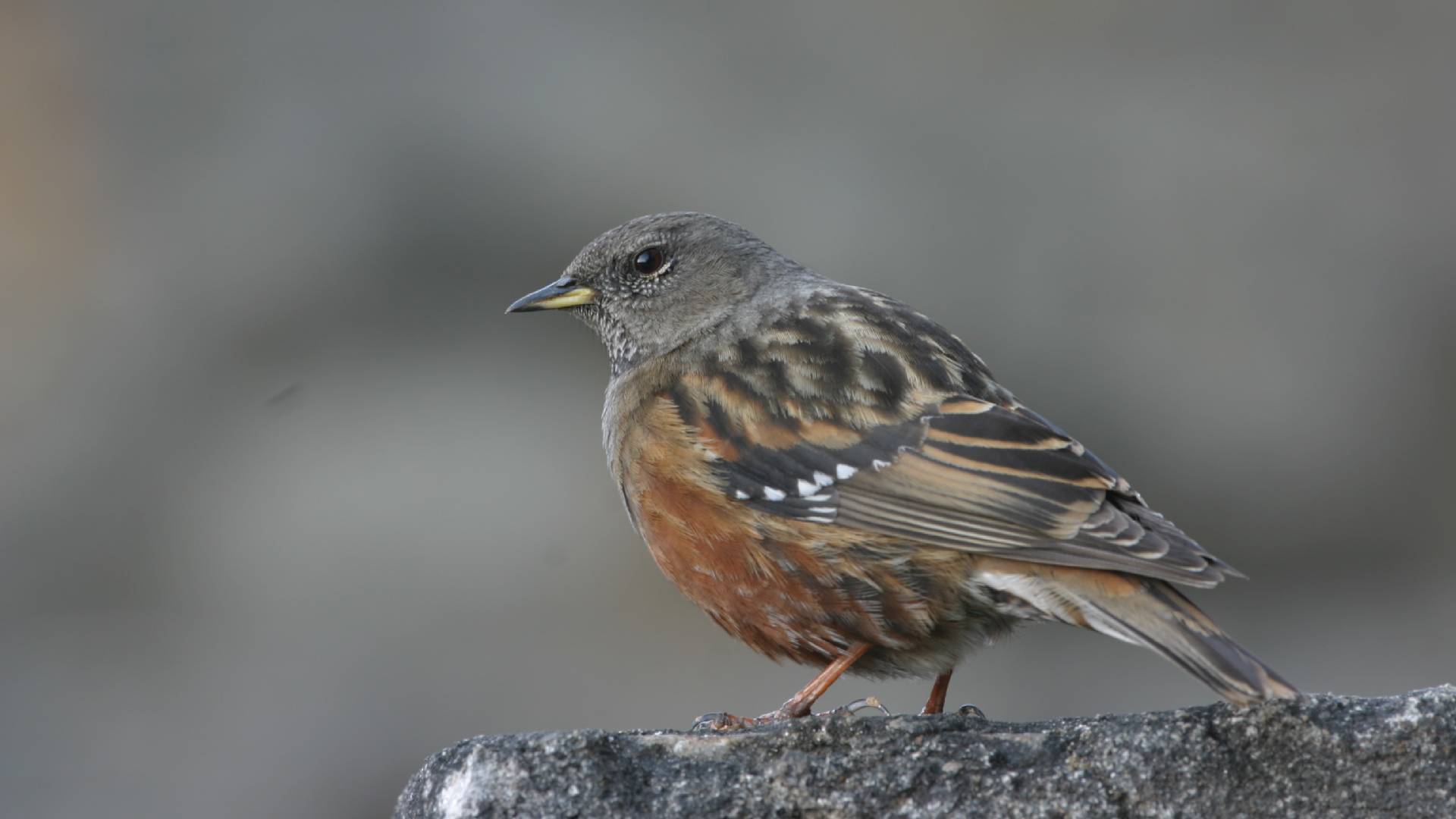


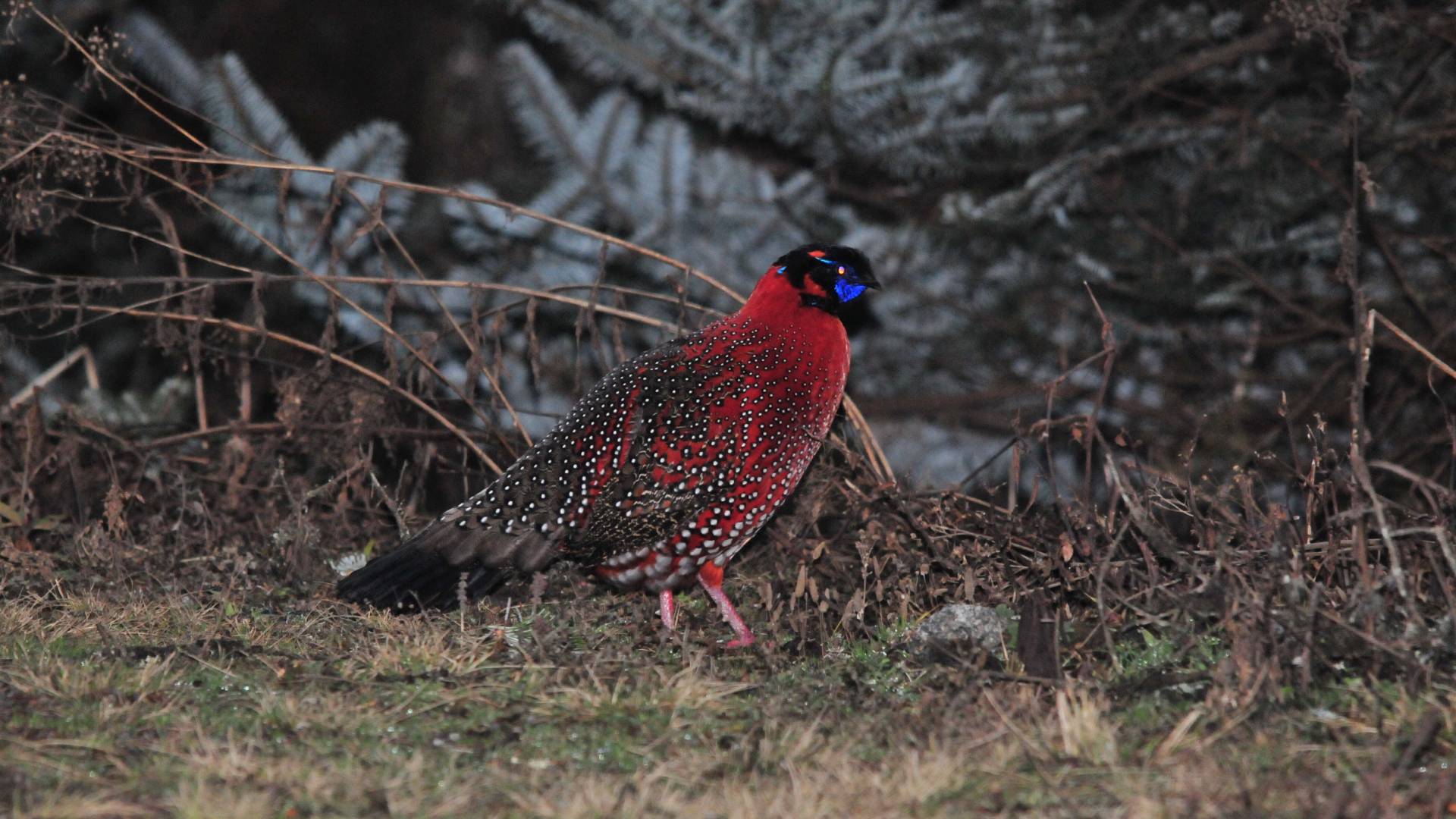
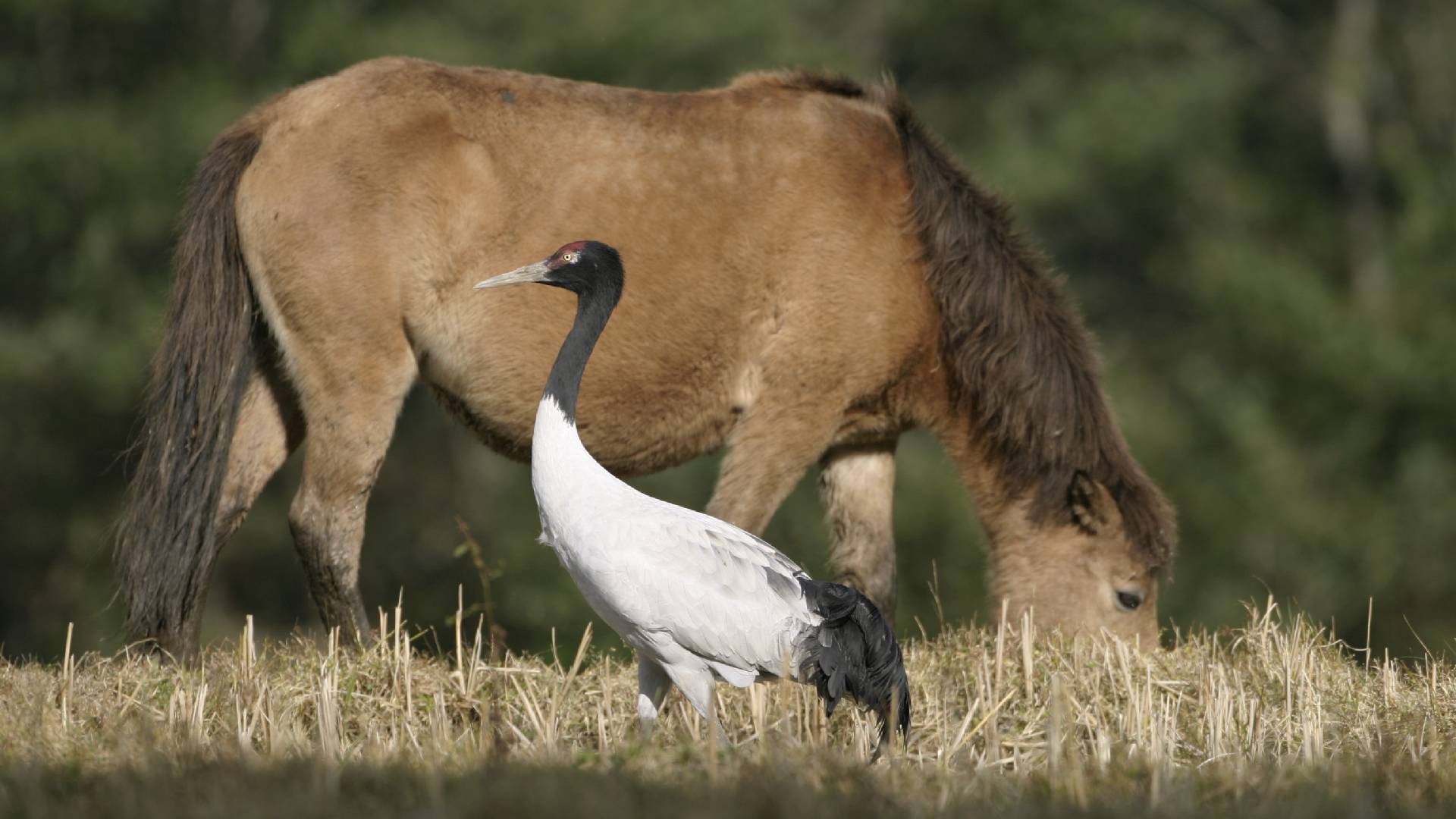
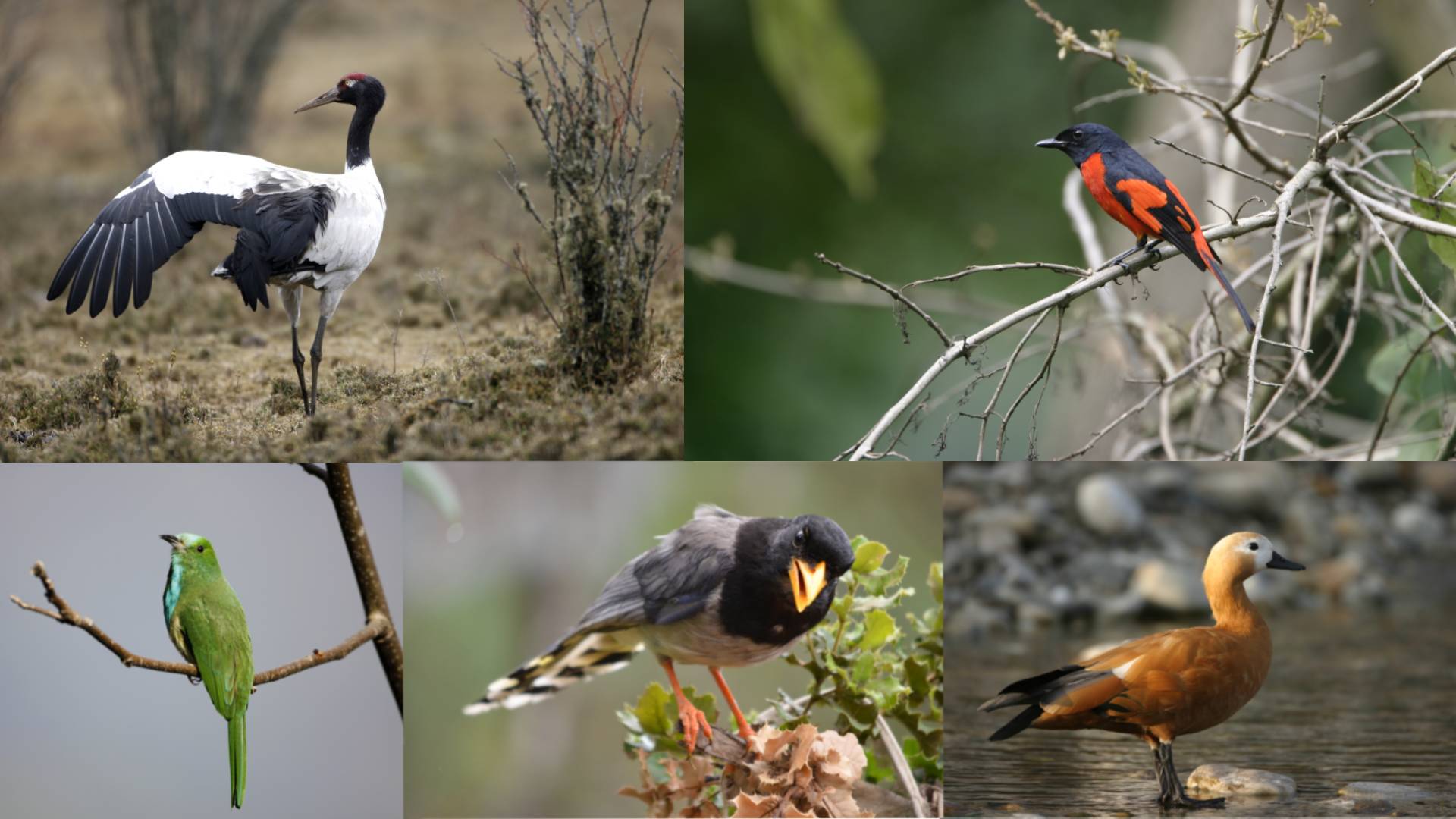
- A hassle free private and guided trip.
- Personalized attention to detail by the Tour Operators.
- Explore endless tracts of Himalayan forest nestled along snow-capped mountain ranges.
- Spot over 250 bird species, including rare gems like monals, tragopans, trogons, and the elusive Ibisbill.
- Enjoy timeless birding adventures in the mystical land of the Thunder Dragon.
- Marvel at impressive sites, including the renowned Tiger’s Nest Monastery, Trongsa Dzong and Punakha Dzong
- Experience of most of the beautiful aspect of Western, Central and Eastern Bhutan.
- Experience traditional Bhutanese life by passing through several villages where locals live as their ancestors did.
- Bhutan’s diverse landscapes, rich cultural heritage,
- Lesser-known treasures across Bhutan.
- Eastern Bhutan’s Untouched Wilderness
- Explore the capital city’s blend of tradition and modernity.
- Experience panoramic views high Mountain Passes
- Engage with the warm-hearted locals in remote villages,
- Discover Bhutan’s rural lifestyle & untouched cultural practices.
- Enjoy scenic drives through Bhutan’s diverse landscapes.
- Experience the rugged and pristine beauty of the Eastern Himalayas, where few travelers venture, and uncover the hidden treasures of this remote region.
- Trip Type: Private and Guided Trip
- Itinerary Duration: 20 Days
- Trip Rating: Easy – Moderate
- Travel Type: Birding, Nature, Culture, Walks, Hikes, Trek, Local Interactions & Experiences, Sights & Monuments
- Arrival: Paro International Airport
- Departure: Paro International Airport
- Destinations: Western, Central and Eastern Bhutan
- Best Time: Spring and Autumn
- Altitude Range: 156 m to 3990 m
Travel Cost
Kindly write to us at idealtravelcreations@gmail.com for the travel cost as the cost varies for different months and Nationalities.
The cost does not include the following:
- All kinds of bank charges
- Single room supplement
- Personal expenses, such as phone, laundry, etc.
- Any form of insurance
- Any kinds of bottled drinks
- Flights fares – both domestic and international
- Gratitude and Tipping
- Extra activities such as rafting, cycling, horse ride
(if not included in the inclusion or complimentary) - All kinds of additional expenses due to unforeseen contingencies whether man-made of natural
- Anything not mentioned in the cost inclusion during the confirmation of the trip
Notes
- During the days of birding, the trip will start early morning (Mostly before breakfast) considering it is best to begin birding at daybreak (especially in the Tropics). The singing and other bird activity are at their peak in the daybreak. By noon the birding activity often minimizes so we make return to hotel for rest and again start birding in the late afternoon as it starts cooling.
- Though we are normally 99% successful in spotting all the species mentioned in the itinerary, we cannot guarantee sightings of the all birds or animals as mentioned.
- We reserve the right to change the itinerary or hotels/ accommodations anytime as may be required to, in case of unforeseen contingencies (natural/man made) or unavailability of hotels or any other services such as flights and transport.
- Some of the sites to be visited may be closed on government holidays or during breaks (or for other unknown reasons). In such cases we shall do other sightseeing in its place.
- This itinerary can be tailor made for any duration or within any destination and can be combined with any kind of activities such as trekking, rafting, walking tour, cycling , etc
- It is advisable to book tours in Bhutan at least 6 months prior to the travel date because of limited Bhutan tourism infrastructures and inventories.
- Except for the planning, guidance and information phase, all bookings are confirmed only after the receipt of the tour payment.
Cancellation Policies
- We shall charge a minimal amount of USD 30 as administrative charges for any bookings cancelled more than a month before the date of travel.
- 25% of the payment shall be charged as cancellation charges for any bookings cancelled within one month to 16 days from date of travel.
- 50% of the payment shall be charged as cancellation charges for any bookings cancelled within 15 days to 7 days from date of travel.
- 100% cancellation charges shall be applicable for any any bookings cancelled within 6 days from date of travel or no show
- Cancellation charges shall also depend upon the policies of the parties from whom we have taken the services such as hotels and airlines. The cancellation charges levied by the external parties shall be applicable incase it exceeds the amount as mentioned above in points 1 – 4.
Itinerary
The panoramic Himalayan views shall be mesmerizing as you fly to Bhutan. The Landing is another experience. On arrival at the Paro International airport your guide from Ideal Travel Creations shall welcome you with a “Tashi Khadar”.
Drive to Hotel and check in. Looking into what time you arrive in Paro (if time permits), we will spend the rest of the day birding and exploring the Pa Chhu (Paro River). We shall try spotting Ibis bill, along with other sought-after species such as the Wallcreeper, Black-tailed Crake, Solitary Snipe, Brown Dipper, White-capped Redstart, and Rufous-breasted Accentor. Red-billed Choughs are a common sight soaring over the town.
Drive back to hotel for a welcome dinner.
Overnight in hotel.
ALTITUDE OF PARO: 2280 m
Your day starts with an early morning hike to Taktshang Monastery, one of the most wonderful and significant monasteries in Bhutan. Also known as the Tiger’s Nest, the hike shall be accompanied with stories of Guru Rinpoche, who arrived on the spot where the monastery is located on the back of a flying tigress somewhere in 8th century. Reaching the top shall enlighten you on why the Monastery is an iconic pilgrimage for visitors to the Kingdom of Bhutan. During our hike, we’ll encounter an abundance of bird species. Among the ones we’re most likely to see are the Red-billed Chough, Large-billed and House Crow, Blue Whistling Thrush, White-throated and Black-faced Laughingthrush, Plain Mountain Finch, Long-tailed Minivet, Black-browed and Green-backed Tit, Russet Sparrow, and Altai Accentor, to name just a few.
Afternoon, Visit Kyichhu Lhakhang, a 7th-century temple nearby with two magical orange trees that bear fruit throughout the year. Drive to a local farmhouse for lunch with a Bhutanese family. Try the traditional Bhutanese hot stone bath, National Dress and Archery here. You shall also have an opportunity to witness the daily life in a village in Bhutan.
Dinner and overnight in hotel.
ALTITUDE OF PARO: 2280 m
DRIVING DISTANCE – 65 KM | DRIVING TIME – 2.5 HR
Early morning drive to Chelela Pass which is the highest point between the Paro and the Haa Valley. The Chelela Pass lies at an altitude of 3988 m and is the highest motorable roads in Bhutan. The drive from Haa to Chelela would be through a winding road over the dense pine forest, the view is spectacular. As we ascend further to higher elevation the vegetation changes to conifer such as spruce, juniper, hemlock, silver fir and finally at the summit, the vegetation is all open alpine meadows. The Pass is decorated with colorful prayer flags. You can choose to hang some prayer flags or offer incense here. On a clear day the views are beautiful.
This stunning location offers a chance to spot three magnificent pheasant species: the Himalayan Monal, flocks of Blood Pheasants, and the Kalij Pheasant. Additionally, the area is home to various rosefinches, grosbeaks, and laughingthrushes, making it a paradise for bird enthusiasts.
Drive to Haa as we do birding on the way.
While in Haa, Explore the Haa Valley.
Haa valley was known for its animist tradition during the pre- Buddhist era. However, after the visit of the Great Guru Padmasambhava, the inhabitants were transformed into peaceful Buddhist. Guru Padmasambhava subdued the local deities such as AP Chundu and made them the guardians of the Buddhist tradition. Traces of this belief system are still noticed in the form of festivals and rituals. Opened to foreign tourist only in the year 2002, it is a culturally rich valley. A few famous places to visit are the 7th century Lhakhang Karpo (White temple) and Lhakhang Nagpo (Black temple) at the foothills of a venerated three brotherly mountains known as Meri Puensum. The grand annual Haa Tshechu is also performed here at Lhakhang Karpo on the 8th-10th day of the 8th Bhutanese month.
The valley is also unparalleled in Bhutan in terms of the diversity of the folk culture, legends and shamanistic rituals. The shamanistic traditions are vividly practiced in almost all the communities, most notable of which is the annual ceremony to honor Ap Chundu, the guardian deity of the valley. The valley is also a paradise for nature lovers and travelling there is a very rewarding experience.
Dinner and overnight in hotel.
ALTITUDE OF HAA: 2670 M
DRIVING DISTANCE: 110 KM | DRIVING TIME: 3 HR
After breakfast, drive to Thimphu. Please ensure that you make the drive of 110 km interesting and beautiful by birding at places, visiting villages, interacting with people and taking photographs of birds, rural areas and nature.
The drive from Haa passes two dzongs en route, at Betikha (34 km. from Haa) and at Dobji (65 km. from Haa. It also crosses many villages and fields until you reach Chozom where the Paro River (Pa Chhu) meets the Thimphu River (Wangchhu). You shall see the three stupas built in Nepalese, Tibetan and Bhutanese styles. They were placed here for good luck and safe passage. Drive through the villages of wangsisina, Kasadrapchhu and Namseling finally reaching Thimphu, the capital city of Bhutan.
Afternoon, join the Local residents of Thimphu for circumambulations at the National Memorial Chorten, built in the honor of the Third King Jigme Dorji Wangchuck, also known as “The Father of Modern Bhutan”. Drive towards Kuenselphodrang. On the way visit Hindu Temple formally known as Devi Panchayan Mandir which was consecrated on 1st October 2019. His Majesty, The King Jigme Khesar Namgyel Wangchuck offered worship and granted “Tika” to the Hindu Communities on the Dussehra on 1019 in this temple. Further in Kuenselphodrang, witness the 52-meter Buddha Dordenma statue in Thimphu. Visit the temple inside the statue and discover the 125,000 smaller Buddhas. The place offers a breath-taking view of the Thimphu Valley. If you love Hiking You can opt for a gentle hike to Changangkha Lhakhang from here. It is a 7 km Hike through the pine forest. This trail was initially intended to be a cycling trail but is very good for hike as well. It is a part of the 60 km cycling trail around Thimphu valley which was initiated in 2016 to commemorate the 60th Anniversary of His Majesty the Fourth King of Bhutan. Finally visit the Simply Bhutan, a living museum and a photo studio aimed at preservation and promotion of culture involving Bhutanese youth as the core group. Finally visit Takin Preserve. Takin is the national animal of Bhutan.
Dinner and Overnight in Hotel.
ALTITUDE OF THIMPHU: 2350 M
DRIVING DISTANCE: 76 KM | DRIVING TIME: 2.5 HR
In the early morning, we visit the local sewage pond, a prime spot for spotting Ibisbill, as well as Black-tailed and Ruddy-breasted Crakes. Then we shall drive north of Thimphu, where we shall have our packed breakfast amongst the woods and hike to the Cheri Monastery. Established in the year 1620, the monastery was initially known as Chagri Dorjeden Monastery. After driving for about 20 minutes, we have to steep hike about approx 1 – 1.5 hrs to reach the monastery. Along the way, we may encounter a variety of bird species, including Spotted, Chestnut-crowned, and White-throated Laughingthrushes, Rufous-bellied Woodpecker, Wallcreeper, Brown Dipper, and White-collared Blackbird. The area around the monastery is also home to Goral, a type of mountain goat. Drive to Then we will set off on a scenic drive to Punakha, passing through some of Bhutan’s most picturesque landscapes. About 22 kilometers from Thimphu, we ascend to the breathtaking Dochula Pass (3,150m), where the 108 Druk Wangyel Chortens stand in a serene setting of meticulously maintained gardens. This high-altitude pass also serves as an excellent birding hotspot, offering the chance to spot Darjeeling Woodpecker, Stripe-throated Yuhina, and the much-coveted Fire-tailed Myzornis. The area is also home to Black-faced and White-throated Laughingthrushes, while patient observation may reveal the striking Spotted Laughingthrush. Another remarkable species that has become increasingly reliable here in recent years is the massive Great Parrotbill.
As we descend, we meander through pristine broadleaf forests draped in moss, taking our time to birdwatch along the way. A highlight of the journey is a stop at the Lamperi Royal Botanical Park, an excellent spot to stretch our legs and explore more avian diversity. Here, we are likely to be greeted by Blue-fronted Redstarts and the vibrant calls of Great Barbets, while Yellow-billed Blue Magpies playfully hop across the grassy clearings. Overhead, the rhythmic drumming of the Rufous-bellied Woodpecker echoes from the treetops.
The forests around Lamperi also present our first opportunity to observe mixed warbler flocks, a true test of bird identification skills. Among the many Phylloscopus species that may appear are Whistler’s, Lemon-rumped, Chestnut-crowned, Ashy-throated, and Grey-hooded Warblers. This habitat is also known to shelter the elusive Ward’s Trogon, though it is more reliably spotted later in the tour. Another rarity that occasionally graces this area is the Grey-sided Laughingthrush. Adding to the spectacle, flocks of minivets flash through the canopy, while dazzling Verditer, Rufous-gorgeted, and Ultramarine Flycatchers lend their brilliant colors to the scene.
As the day winds down, we continue our journey into the Punakha Valley, arriving in time to relax and enjoy a well-deserved dinner at our hotel.
ALTITUDE OF PUNAKHA: 1250 M
We begin our morning birdwatching in Jigme Dorji National Park and along the scenic Phochu River. This region offers the chance to spot a diverse array of bird species, including the Red-headed Trogon, Slaty-bellied and Chestnut-headed Tesias, Small and Rufous-bellied Niltavas, Black-chinned Yuhina, various wren-babblers, woodpeckers, and laughingthrushes. With luck, we may even catch a glimpse of Pallas’s Fish Eagle or a trio of forktails.
Afternoon, visit the Punakha dzong at the junction of Pho Chhu and Mo Chhu River. Addition to its appealing looks this Majestic Dzong stands six stories high. Keep an eye out for the Tawny Fishing-Owl, often seen roosting in the towering riverside trees. Walk over the one of the country’s longest suspension bridges and enjoy the breathing views, soothing breeze and a beautiful experience. Finally visit Chimi Lhakhang. Also known as the temple of fertility, the temple was built by Lam Drukpa Kuenley. the revered ‘Divine Madman’ and Buddhist ‘crazy wisdom.’ A lot of graphic phallus paintings and crafts might surprise you in the nearby areas.
In the evening, we’ll explore the Pho Chu Valley, hoping to spot one of our main target species—the White-bellied Heron, one of the rarest birds on Earth with a population of fewer than 200 individuals. We may also encounter Common and Crested Kingfishers, as well as the elusive Ibisbill.
Dinner and overnight in hotel.
ALTITUDE OF PUNAKHA: 1250 M
DRIVING DISTANCE: 78 KM | DRIVING TIME: 2.5 HR
Early Morning drive to Phobjikha. Take some photographs of the majestic Wangduephodrang dzong from the bridge and continue your journey to Phobjikha along the slopes of bare hills following the river (Drang Chhu) until you reach Chuzomsa, (the confluence of the Dang Chhu and the Pe Chhu). After crossing the bridge, the road goes uphill through pine forests often encountering small villages, where women spinning yarns on their porches, older men idling their time and children frolicking around could be the most common sights. On the way we shall try to seek out some of Bhutan’s most elusive avian treasures the unique forests of Nubding. This area may provide us with a chance to spot the magnificent Ward’s Trogon, along with other sought-after species such as the striking Himalayan Cutia. The cliffs and rocky outcrops here are also prime habitat for the Yellow-rumped Honeyguide, which is often seen near hanging rock bee colonies. As we explore these rich woodlands, we remain on high alert for some of the region’s most secretive birds—those that have managed to evade us so far. With patience and a keen eye, we may uncover the diminutive Chestnut-headed Tesia or the equally elusive Grey-bellied Tesia. The dense undergrowth could also reveal the tiny but intricately patterned Scaly-breasted Cupwing, while the ultra-secretive Spotted Elachura, known for its cryptic nature, may offer us a rare glimpse before vanishing into the shadows.
Drive to Phobjikha with a short stop at the Lawala Pass. A few Photographs are must here. Drive down along the pine forest till you reach Gangtey. Visit the Gangtey Monastery and then hike the Gangtey Nature Trail. The trail starts at the 17th century Gangtey Monastery. The two-hour gentle trek lets you get immersed in the beautiful Phobjikha valley. (If you are traveling in Early Spring or winter, the endangered Black Necked Cranes shall keep you very busy as you Hike.
Visit the Khewang Lhakhang and interact with the young monks. On the way back visit the Black Necked Crane Information Centre, a place for recreation with crane watching equipment (binoculars, spotting scopes) and reference books.
Explore the nearby villages for a while.
Dinner and overnight ion hotel.
DRIVING DISTANCE: 180 KM | DRIVING TIME: 6 HR
Early morning drive to the Pelela pass (4000 m). Spend the morning hours birding along the old road at Pelela for the high-altitude Bhutan Bird species such as Spotted Laughing Thrushes, Himalayan Griffons, Brown Parrot bills, Finches, and Bush Warblers. Continue the drive towards Trongsa.
While in Trongsa, visit the impressive Trongsa Dzong, which is the ancestral home of the Royal family of Bhutan. The first king, before becoming the King of Bhutan, was the Governor (Penlop) of this Dzong. Even now, it is tradition that any future King of Bhutan must first serve as Governor of Trongsa before the coronation (a form of governance training).
Drive down to Tingtibiti. Stop at places for birding, to view scenery and for photography.
Dinner and overnight in hotel/ Eco Lodge/ Camp.
ALTITUDE OF TINGTIBI: 600 M
We’ll be exploring a wide variety of habitats of Bhutan Birds on the Zhemgang – Tingtibee road. The habitats range from the moss forest to the streamside lowland forest. This is also our best chance to see Bhutan’s endemic Golden Langur leaf monkey, as it is fairly common here. Here, we will be searching for Rufous-necked and Great Hornbills, Pin-tailed Green Pigeons, Cutias, Scarlet Minivets, varieties of Cool Laughing Thrushes, Woodpeckers, Chestnut-headed and Grey-bellied Tesias, Spotted Wren Babblers, and the very rare and sought after Beautiful Nuthatches.
Dinner and overnight in hotel/ Eco Lodge/ Camp.
DRIVING DISTANCE: 75 KM | DRIVING TIME: 2.5 HR
After breakfast, we’ll head to the lowlands of Panbang, a small town in Zhemgang Dzongkhag, situated 13 kilometers from the Indian border. This peaceful village is a paradise for birdwatching enthusiasts, showcasing Bhutan’s rich avian biodiversity. The only road to Panbang connects it to Royal Manas National Park, but it remains the primary shopping hub for the residents of four gewogs within Panbang Dungkhag. Modern amenities are available, and the town is experiencing a surge of young entrepreneurs embarking on ventures such as organic farming, rafting, chicken farming, piggery, and fishery.
Our journey will be complemented by leisurely birding experiences. Our list of sightings is bound to grow even more. In the early morning, Green and Mountain Imperial Pigeons can be spotted perched high in the trees, providing a prime opportunity to find the elusive Jerdon’s Baza and the diminutive Collared and Pied Falconets. This area is also a hotspot for Bhutan’s large hornbills, including the Great, Rufous-necked, and Wreathed Hornbills.
We’ll keep our eyes peeled for other sought-after birds like the Long-tailed Sibia, Pin-striped Tit-Babbler, and the stunning Greater Racket-tailed Drongo. The surrounding area features several bamboo patches where we can search for species such as the White-hooded Babbler and Rufous-faced Warbler if we haven’t encountered them yet. Other likely low-altitude finds include the vibrant Streaked Spiderhunter, the colorful Asian Fairy-bluebird, and the vocal Golden-fronted Leafbird. The nearby river is a reliable spot to find the Crested Kingfisher and Black-backed Forktail, with the occasional sighting of the rare Blyth’s Kingfisher—though spotting this one may require some luck. These are just a few of the many birds on our radar, and we can expect to record impressive daily totals as we explore the area.
Dinner and overnight at an Ecolodge, Village house, or Camp.
ALTITUDE OF PANBANG: 156 M
Spend the birding, rafting, visiting villages exploring the Royal Manas National Park.
Dinner and overnight at an Ecolodge, Village house, or Camp.
ALTITUDE OF PANBANG: 156 M
DRIVING DISTANCE: 205 KM | DRIVING TIME: 7 HR
After breakfast, drive to Bumthang via Trongsa birding on the way. Expected species are Himalayan Bulbul, Blue Rock Thrush, Rusty-cheeked Scimitar Babbler, Crested Bunting, Striated Yuhina, Crimson Sunbird, Spot-winged Starling (rare), White-crested Laughingthrush, Common Rosefinch, Spot-bellied Eagle Owl, Daurian Redstart (rare), Red-faced Liocichla, Bay Woodpecker, Grey-headed Parrotbill, Black Eagle and Blue-winged Minla.
After Trongsa we shall do some birding below Yoptongla pass. We can expect to see Himalayan Monal (rare), Blood Pheasant, Darjeeling Woodpecker, Stripe-throated Yuhina, White-winged Grosbeak, Himalayan Griffon, Himalayan Buzzard, Chestnut-headed Tesia, Crimson-browed Finch, Scaly-breasted Wren Babbler, Gold-naped Finch, Brownish-flanked Bush Warbler, Red-headed Bullfinch, Streak-breasted Scimitar Babbler, Little Bunting and Himalayan Wood Owl.
Drive past Yotong La (3450m) till we reach Gyetsha Village in Chhumey. In the evening, (If time permits) explore te Gyetsha Village.
Dinner and overnight in hotel.
ALTITUDE OF BUMTHANG: 2800 M
Early morning drive to Tharpaling Monastery via dirt road to spot some Bhutan’s special birds, the colorful Himalayan Monal. Visit the Monastery and drive to Jakar.
After lunch, photograph the Jakar Dzong (from outside), literally meaning the Castle of White Bird. Visit the Wangdichholing Palace which was the home to the First and Second Kings of Bhutan. Continue your day’s sightseeing with visits to Kurjey Lhakhang and Tamshing Lhakhang (if time permits). In the evening, visit the cheese and apple juice/wine making factory. Taste the Locally made red panda beer here.
Explore the Chamkhar Town before settling down in your hotel.
Dinner and overnight in hotel.
ALTITUDE OF BUMTHANG: 2800 M
DRIVING DISTANCE: 140 KM | DRIVING TIME: 4.5 HR
After breakfast, Ura, Explore the Ura Valley for a while and drive to Yongkola via Thrumsingla at 3800 m. We shall do some birding on the way around Thrumsingla for Blood Pheasant, Snow Pigeon, Orange-flanked Bush-Robin, Spotted Nutcracker, Red-billed Chough, Fire-tailed Sunbird, Great Parrotbill, Stripe-throated Yuhina, Grey-crested and Coal Tits and White-browed Fulvetta. If lucky we may be able to spot the most beautiful and magical Himalayan Monal. Thrumsingla is a prime habitat for blood pheasants.
Further on the way we shall start birding as we move towards Sengor. From Sengor as we move towards Yongkola, the forest starts to change from conifers to broad-leaved forest. Around, Sengor we will be looking for high altitude bird species such as Blood Pheasant and Satyr Tragopan. These birds are in the list of all birders. Other species include Mrs Gould’s Sunbird, Rufous-gorgeted Flycatcher, Bar-winged Wren-Babbler, Red-headed Bullfinch, Rusty-fronted Barwing, Gold-naped Finch and Slender-billed Scimitar-Babbler.
Many Birders consider this short stretch of broad-leaved forest between Yongkola (1800 m) and Sengor (3000 m) as “Birding Capital of The World”.
Dinner and overnight in hotel/ Camp
ALTITUDE OF YONGKOLA: 1800 M
DRIVING DISTANCE: 50 KM | DRIVING TIME: 2 HR
In the morning, we will do birding around Limithang Road. We shall be exploring Bhutan’s wet subtropical forest which is one of the finest birding areas in the Himalayas. These areas are ranked among the world’s top birding sites. Untouched forest, ravines, waterfalls and beautiful views come as additional perks. We shall start early and spend the whole day searching for shortwings, Black-headed Shrike-Babbler, Ward’s Trogon, Slender-billed Scimitar-Babbler, Yellow-rumped Honeyguide, barbets, Golden Bush-Robin, Chestnut-breasted Partridge and many other rare species alongside Little Forktail, Large Niltava, Russet Bush-Warbler, Violet Cuckoo and Rufous-faced Warbler, Wedge-billed Wren-Babbler, Rufous-throated Wren-Babbler, Spotted Wren-Babbler, Rufous-necked Hornbill, Coral-billed Scimitar-Babbler, Slender-billed Scimitar-Babbler, flocks of parrotbills, Golden-breasted Fulvetta, Scarlet Finch, Slaty-bellied Tesia, Lesser and White-browed Shortwings and more.
Dinner and overnight at the Hotel.
ALTITUDE OF MONGAR: 1600 M
DRIVING DISTANCE: 120 KM | DRIVING TIME: 3.5 HR
After breakfast drive to Trashiyangtse via Korila Pass (2450 M, Highest Pass between Mongar and Trashigang). The forest at the Korila Pass is rich in mosses and lichens. We shall do some birding in these Mountain Forest. We shall try spotting Steak-breasted Scimitar-Babbler, Grey-winged Blackbird, Hoary-throated Barwing, Long-tailed and Short-billed Minivets, Bhutan Laughingthrush, Chestnut-bellied Nuthatch, Brownish-flanked Bush-Warbler and Spotted Wren-Babbler.
Drive to Trashiyangtse. As you wind your way through the rugged terrain, you’ll pass through dense forests, cross high mountain passes, and glimpse traditional villages nestled in the hillsides. The route offers breathtaking views of the eastern Himalayas, with every turn revealing new vistas of lush valleys and distant peaks. On the way visit the Gom Kora Lhakhang. Gomphu means “Meditation Cave” and Kora means “Circumambulation”. The name is derived from a cave formed out of a rock-face next to a temple that has been built as a tribute to this sacred site.
Located in the eastern Bhutan at an altitude of 1700 m, Trashiyangtse is a rapidly growing town and administrative center of the district. The main town is situated in a small river valley and is a lovely spot to take walks in the countryside. This area is famous for wooden containers and bowls.
Visit Chorten Kora. One of the most important stupas in Trashiyangtse built in the year 1740, and then explore the villages, learn about wooden containers and bowls and making it.
Dinner and overnight in hotel or Homestay.
ALTITUDE OF TRASHIYANGTSE: 1800 M
DRIVING DISTANCE: 50 KM | DRIVING TIME: 2 HR
In the morning, drive to Bomdeling and do some birding here. Bomdeling is a picturesque valley renowned for its natural beauty and ecological significance. This serene area is a vital wintering ground for the endangered black-necked cranes, making it a haven for birdwatchers and nature enthusiasts. if you are traveling in winter or early spring we shall watch the endangered Black Necked Cranes here. Other species that we might encounter in Trashiyangtse are; Hodgson’s Redstart, Chestnut-crowned Laughingthrush, Blue-fronted Redstart, Oriental Turtle-Dove, Himalayan Bluetail, Great Cormorant, Yellow-billed Blue-Magpie, Yellow-bellied Fairy-Fantail, Green-backed Tit, Black Bulbul, etc.
Retrace your road towards Trashigang till you reach Chazam. In the evening walk around the Trashigang Town.
Dinner and overnight in hotel.
ALTITUDE OF TRASHIGANG: 1200 M
We shall do some sightseeing in Trashigang today. After a leisure breakfast, explore the Trashigang town for a while. Then visit the Trashigang Dzong, which lies on the headland of the dzongkhag that gives us the confluence of the Drangme Chhu and the Gamri Chhu. It was built by Minjur Tempa, Bhutan’s third Desi in the year 1667. It was once destroyed by fire and was rebuilt in only three years. In the Gorikha (Veranda) are the paintings of the kings and guardians of the four directions.
Drive to visit Radhi Village which is famous for “Buray”. Buray is a Bhutanese textile woven from raw silk. Explore the village meeting different Bura weaver. Interact with the weavers, study and enjoy the techniques, process, tools and materials for this famous Bhutanese textile. Then drive to Rangjung Village. Visit the Rangjung Monastery. Explore the Rangjung Village and then drive to Trashigang.
Dinner and overnight in hotel.
ALTITUDE OF TRASHIGANG: 1200 M
After breakfast, drive to Yonphula Airport and then fly to Paro Airport. Drive to Hotel. You may choose to relax in the hotel or do some sightseeing or birding in discussion with your guide.
Dinner and overnight in hotel.
ALTITUDE OF PARO: 2280 m
“The Birdsong and Dragon tales” comes to an end with a drive to Paro airport and farewell.
Book this tour
Worth a Look
Similar Packages
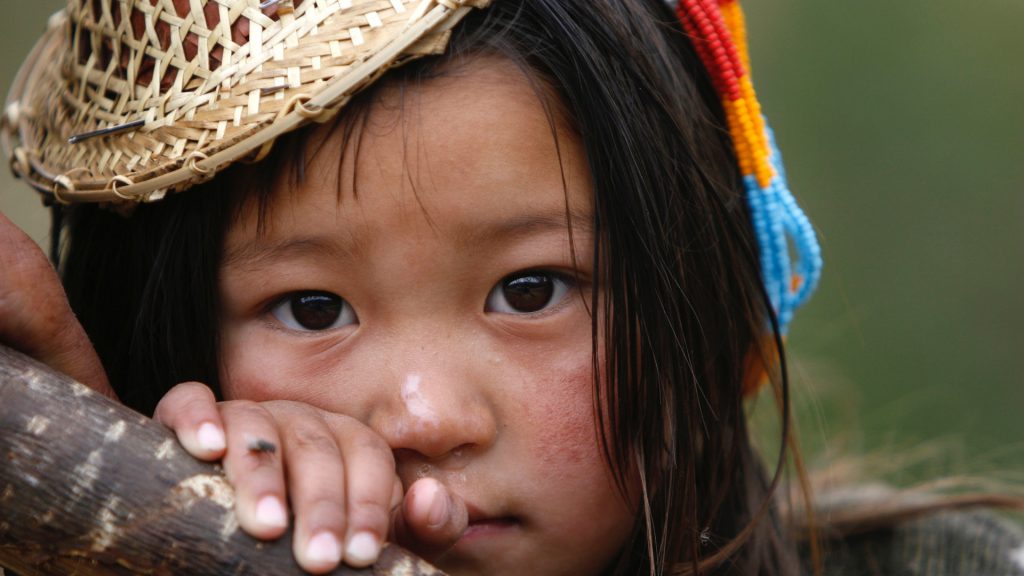
Nature & Cultural delight
- 13 Nights Cultural Tour in Bhutan
- Special Discounts available
- USD 4395 onwards
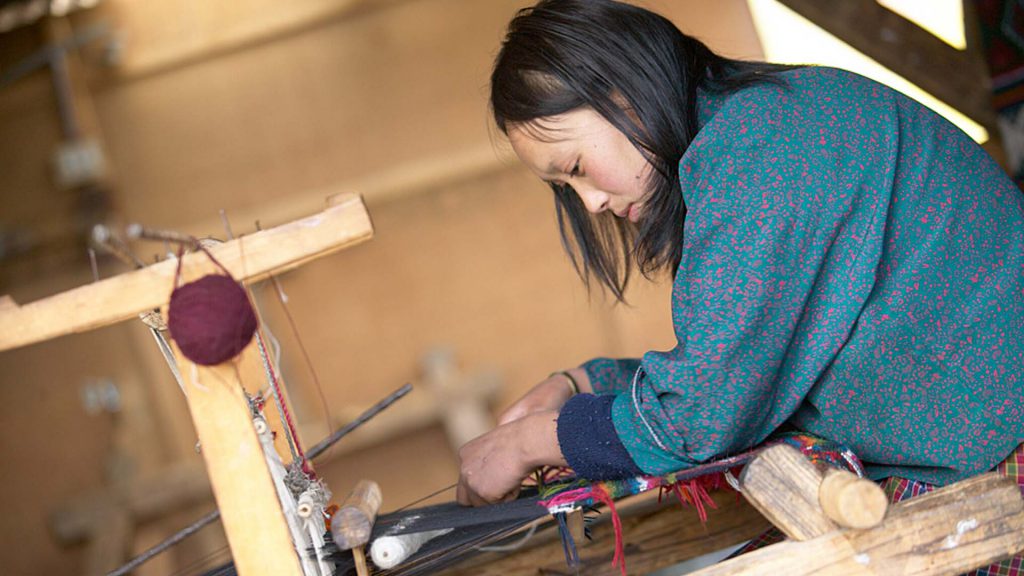
Unveiling Bhutanese Textile
- 15 Nights Bhutanese Textile Tour
- Special Discounts available
- USD 5065 onwards
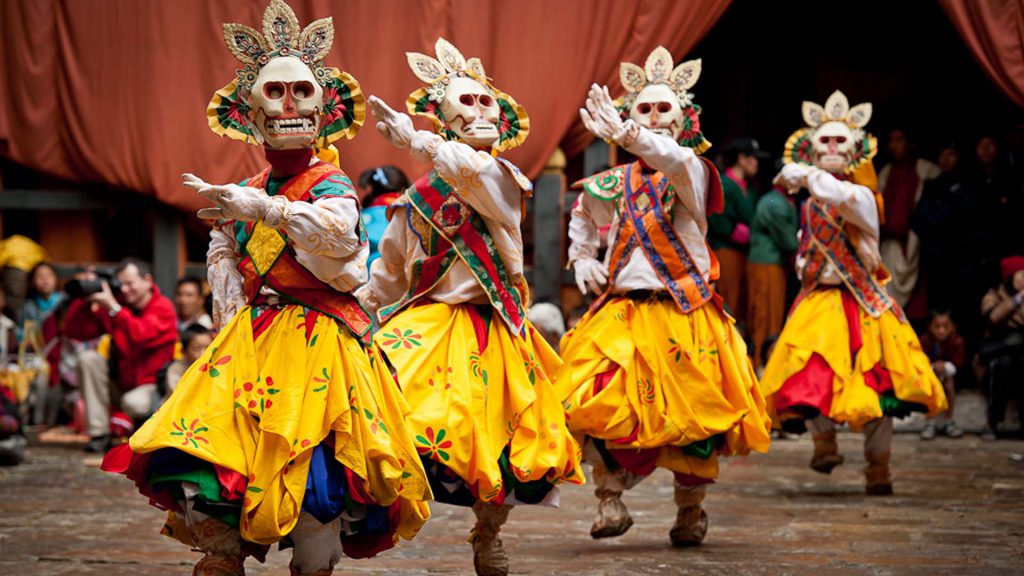
Thangbi Mani Festival Tour
- 10 Nights Bhutan Festival Tour
- Special Discounts available
- USD 3390 onwards
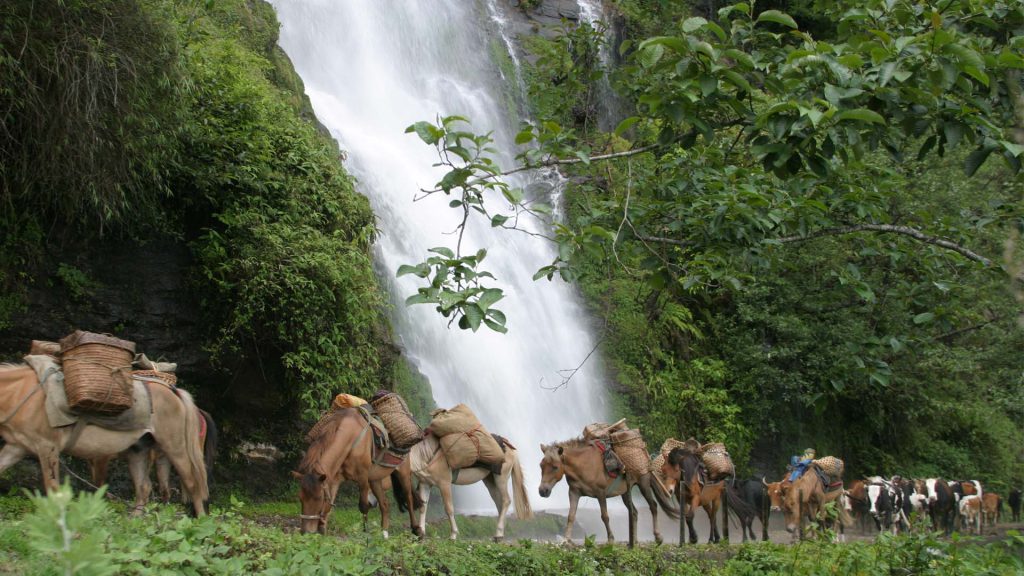
The Dagagla Ancient Trail
- 14 Nights Thimphu to Dagana Trek
- Special Discounts available
- USD 4730 onwards
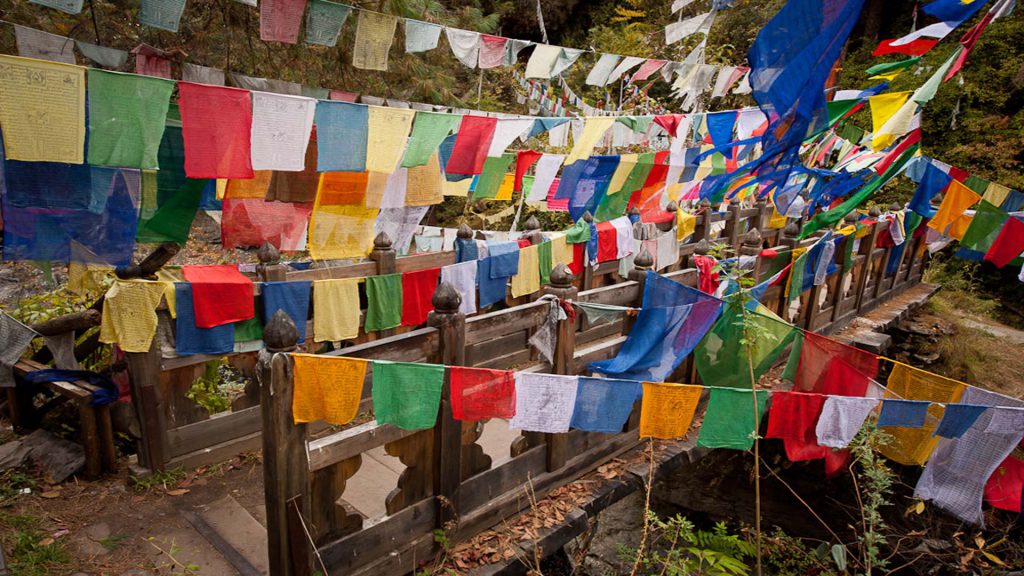
A Photo Journey in Bhutan
- 8 Nights Bhutan Photography Tour
- Special Discounts available
- USD 4070 onwards
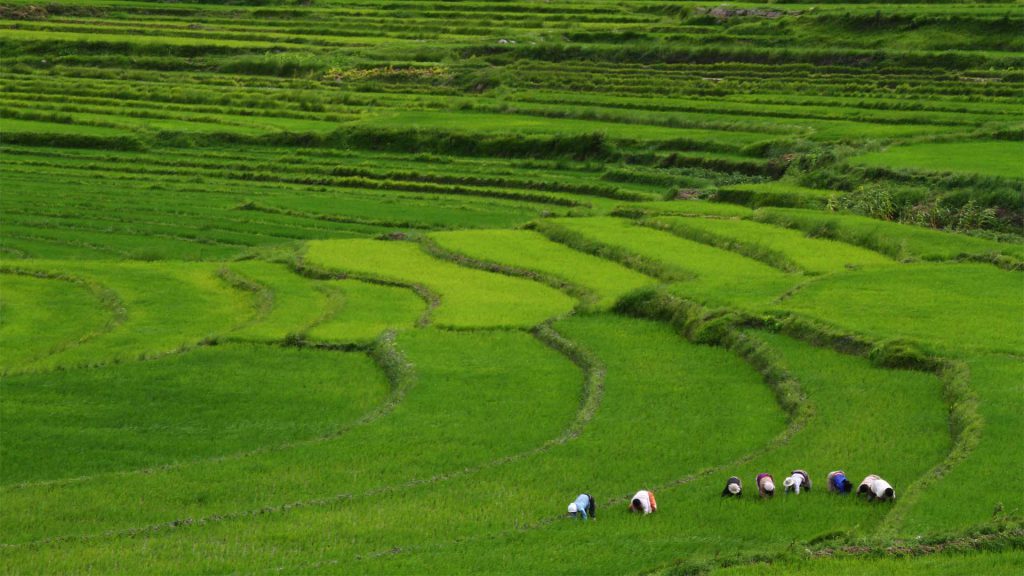
Happiness and Hikes
- 6 Nights Rejuvenating Bhutan Travel
- Special Discounts available
- USD 2050 onwards
